MediaPurgatory.com is a participant in the Amazon Services LLC Associates Program. As an Amazon Associate, this site earns from qualifying purchases. This site also participates in other affiliate programs and is compensated for referring traffic and business to these companies.
Citizen Kane has been named “The Greatest Movie” more than any other movie. But, what makes it such a masterpiece in the first place? Does it have the greatest script ever written? Does it have the best acting in cinema history? Is it the greatest story ever told on film? The answer to all these questions is NO.
Well, what’s the secret ingredient then? Why do so many industry professionals and filmmakers constantly proclaim it to be the greatest movie ever made?
In this article I will try to answer two questions about this film:
- 1) Is it overrated? and
- 2) Is it really the greatest of all time?
But first, let me explain why it’s being held in such high regard by the people who make and study movies for a living.
1. Why is Citizen Kane so Frequently Considered the Best Movie Ever Made?
The answer is influence.

Citizen Kane uses numerous innovative filming and storytelling techniques that are going to influence many great filmmakers in the years to come. The implementation of these techniques was owed largely due to director Orson Welles’ ignorance and inexperience during filming.
Kane was Welles’ first movie and because he did not know how movies were made, he had no idea what procedure he was supposed to follow. So, by just doing his own thing, he unknowingly changed the rules of the game and created a new, superior blueprint for countless future directors to follow.
No less influential was cinematographer Gregg Toland. Toland was deliberately looking to work for an inexperienced film director because he wanted to try some new experimental camera techniques that he was working on, but he knew that he wouldn’t be allowed to implement them by an established Hollywood director.
Ultimately, it was Toland’s new techniques that will turn Citizen Kane into one of the most influential movies of all time. Welles himself has said: “It’s impossible to say how much I owe to Gregg.”
So, what are these groundbreaking techniques?
Cinematography
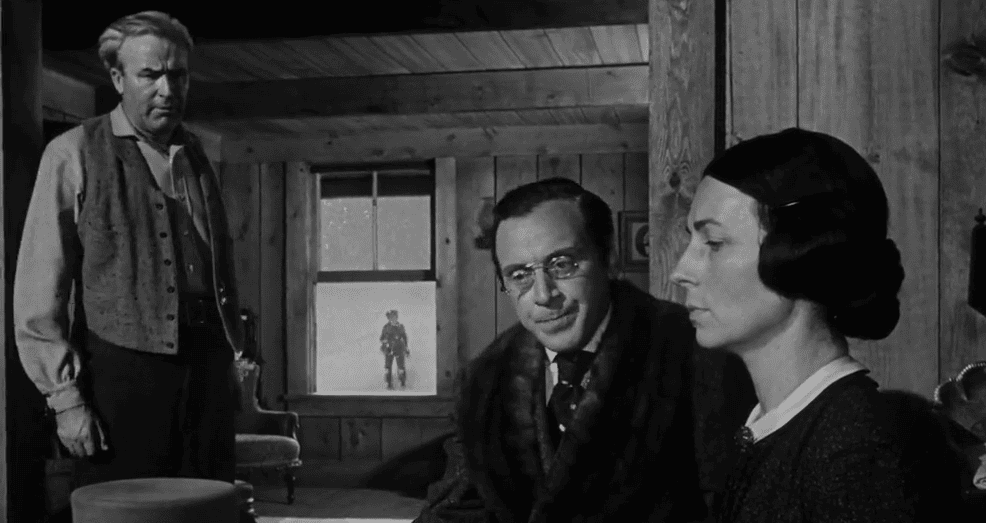
The use of deep-focus cinematography is perhaps Citizen Kane‘s most distinguishable feature. Before Kane, directors would usually use what we now call shallow-focus cinematography, where one feature (an actor or an object) would be in focus, while the rest of the background and middle ground would be out of focus. But, thanks to Toland’s innovations, Citizen Kane gives us much more realistic-looking scenes with everything in the foreground, middle ground, and background in sharp focus.
Another influential technique used in Citizen Kane is the low-angle camera shot. Welles was obsessed with low-angle shots because he thought that when the camera captures the entire room, including the ceiling, it makes the interior look a lot more interesting. Also, by using this technique, Welles wanted to make certain characters appear “larger than life.”
Sometimes Welles went to extreme lengths to achieve this. For example, when told by his cameraman that the camera “cannot go any lower” while he was preparing to shoot the post-election confrontation between Kane and Leland, Welles had his crew dig a hole into the floor so that he and Tolland would be able to film from the desired angle.
Now, it must be said that Welles and Toland didn’t invent these techniques. The deep-focus cinematography and low-angle camera shots were already used in older movies such as The Cabinet of Dr. Caligari (1920) and Stagecoach (1939)—films that Welles would watch and study before and during the filming of Kane—and in early German Expressionist movies.
But it was Toland and Welles who perfected these techniques, used all of them in a single film for the first time, and utilized them more effectively than any other filmmaker before them.
Storytelling
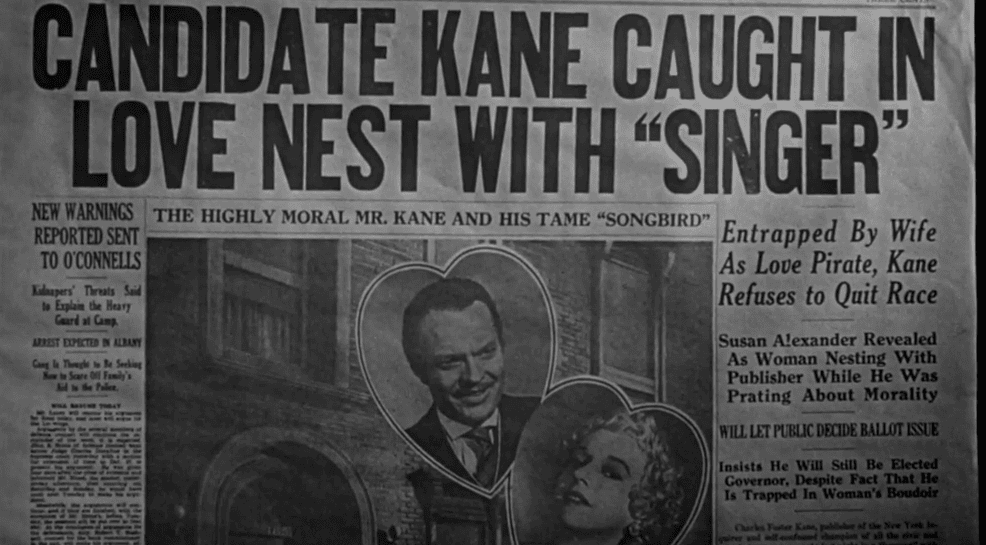
The cinematography wasn’t the only influential aspect of Citizen Kane. The movie also introduced some revolutionary storytelling techniques.
Citizen Kane is one of the first movies that uses non-linear storytelling. Up until then, people were used to watching stories being told in chronological order, but Kane subverted this formula by giving the ending away at the very beginning. This was completely new at the time and subverted audiences’ expectations of how a story could be told.
The film also gives us one of the first morally complex characters. Until Kane, movies usually had black-and-white characters where we would typically be introduced to a hero(s) and a villain(s), and from the very start, the movie would practically tell us how we are supposed to feel about them—who are we supposed to hate and who are we supposed to root for.
But, Kane doesn’t do this. Throughout the movie, we are introduced to Kane as a young, idealistic man, we follow him through his friendships and failed marriages, and we witness how he is slowly losing the principles he once held. We are introduced to a morally complex human being who doesn’t seem to fit into the simplistic “hero” or “villain” categories. Whether we hate him or pity him is entirely up to us.
Another thing Citizen Kane does differently is it exposes the audience to multiple viewpoints about the titular character. Movies made before Kane usually gave us only one perspective—that of the hero. But, Welles tells Kane’s story from multiple points of view. We get to know Kane’s ex-lovers, friends, employees, and business associates—each telling their version of who Charles Foster Kane was as a person.
As a result, we get to see different sides of Charles Forster Kane and get a better understanding of him so we can finally realize why he ended up alone and miserable despite all the power and wealth he had.
Editing

The film is also known for its innovative editing. During the famous “breakfast montage,” Welles managed to condense Kane’s sixteen years of marriage into just two minutes of screen time. Welles perfectly captures the deterioration of Kane’s first marriage using only images. The use of montage to collapse time and space is one of the most influential techniques pioneered in Citizen Kane that would go on to be used in some of the most iconic scenes in cinema history.
2. Is Citizen Kane Overrated?
So the answer to the first question is: NO. Citizen Kane is not overrated. Even if it’s not your personal favorite, it’s certainly one of the most influential and significant movies ever made, and you should, at least, have an idea why professional movie critics and directors would hold it in such high regard.
Now, I do understand why today’s viewers might be scratching their heads after seeing the movie for the first time, trying to figure out why, out of all the films ever made, someone would pick this one as the greatest masterpiece in all of cinema. I was there too.
But, the reason Kane is frequently considered “the greatest of all time” by industry professionals, is that, unlike common folks, these critics, writers, and directors know how groundbreaking the movie was for its time and the influence it had on directors like Kubrick, Spielberg, Scorcese, Coppola, and countless others.
Audiences today are unaware that when they watch the movie they are witnessing the birth of many of the filming techniques that they are accustomed to. It’s not an exaggeration to say that the entire history of cinema can be divided into “before” and “after” Citizen Kane.
But, now let’s move on to the second question.
3. Is Citizen Kane the Greatest Movie Ever Made?
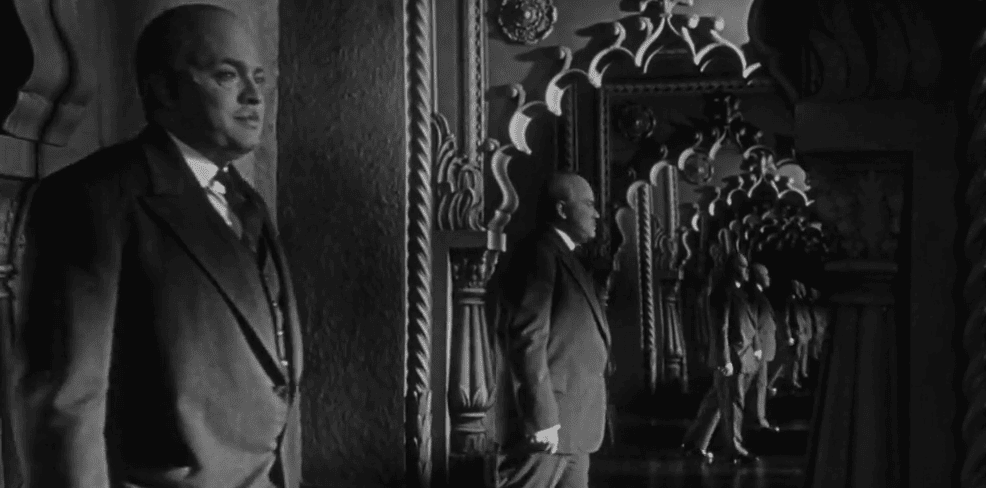
As I said, when young people today watch Citizen Kane for the first time, they usually end up scratching their heads, wondering why is this particular movie so frequently considered cinema’s greatest achievement. This might mean that, although groundbreaking for its time, perhaps the movie hasn’t aged like fine wine.
No one is denying Kane‘s influence, but shouldn’t a movie that’s being constantly labeled “the greatest” give you one of the most powerful emotional experiences without you having to read about how groundbreaking the filming techniques used in it were? I’m not saying that Citizen Kane is going to bore everyone to death, but in terms of emotional impact, it’s fair to say that it has been surpassed numerous times.
Although critics have raved for ages about how the movie belongs at the very top, audiences usually do not seem to share their enthusiasm. If you would ask 100 random people on the street what their favorite movie is, I wouldn’t be surprised if not one person answers “Citizen Kane.” But, shouldn’t there be, at least, some overlap?
After all, movies are not made for professional movie critics (who are not even one percent of the movie-going population). They are made for the common folks, and, for the most part, common folks were always being told by the “higher-ups” that “Kane” is the greatest of all time, rather than coming to that conclusion on their own.
But, recently, even “professionals” seem to have second thoughts about Citizen Kane being the best. The most important “greatest movies” poll is considered by many to be the Sight & Sound magazine poll. Every decade, starting with 1952, the magazine invites the most distinguished film critics and directors to vote for the best movies ever made. Citizen Kane has topped the polls for five consecutive decades, but in 2012 it was finally dethroned by Hitchcock’s Vertigo.
It’s also worth mentioning that Orson Welles himself did not think of Citizen Kane as his greatest achievement (Welles considered Chimes at Midnight to be his finest work).
Considering all this, it’s safe to conclude that Citizen Kane is NOT the greatest movie ever made. Of course, the film is still a masterpiece, and no one is denying its influence, so perhaps calling it “the most influential” would be more appropriate than proclaiming it “the greatest.”
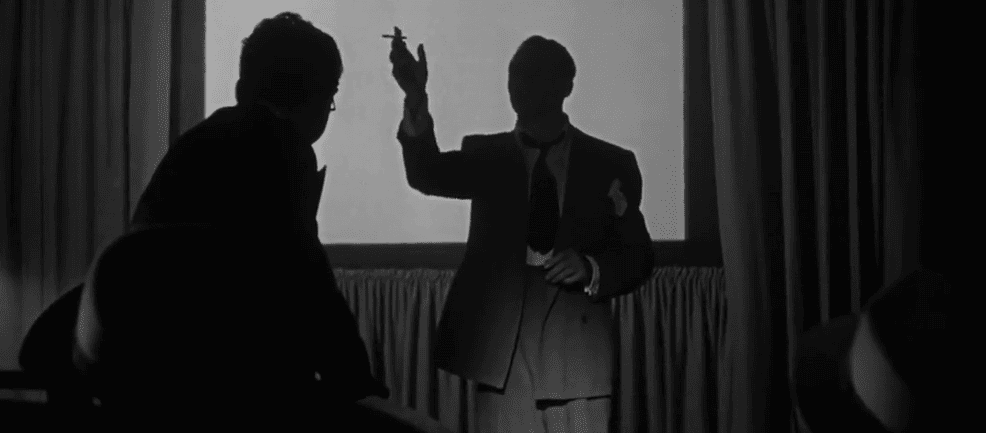
So, if Citizen Kane is not the greatest movie of all time, then what movie does deserve the top spot? Well, this is a tricky question because we all have different tastes in films, but in the next part, I will do my best to provide you with an answer. I’ll give you a list of fourteen movies (that’s right, fourteen!) that, in my humble opinion, have aged much better, and are therefore more deserving of the crown.
4. Fourteen Movies That are Better Qualified than Citizen Kane to be called “The Greatest”
I. Lawrence of Arabia (1962)
If you look up the word “Epic” in a dictionary, there should be a picture of Peter O’Toole in white robes. And if there isn’t, you should probably get yourself another dictionary. This movie has been called “the most epic movie of all times” and “the epic of all epics” and I can assure you: it lives up to its hype. Filmmaker David Lean is known for directing some of the most iconic films in history, and Lawrence is arguably his greatest achievement.
Some historians have criticized the portrayal of T.E.Lawrence as inaccurate, but nevertheless, the movie is widely considered to be one of the best ever made and was voted as “The Greatest British Film of All Time” in a Sunday Telegraph poll in 2004. It’s also Steven Spielberg’s favorite movie.
II. The Good, the Bad, and the Ugly (1966)
In 1966, when The Good, The Bad, and the Ugly was released, spaghetti westerns were still looked down upon by western critics who considered them to be inferior to their Hollywood-made counterparts. Because of this, the movie initially received a mixed reception in the west and was not recognized as a serious work of art.
But, as the years passed, and the stigma surrounding the spaghetti western genre dissipated, The Good, The Bad, and The Ugly would go on to be considered, not only the best spaghetti western ever made, but the greatest western overall.
It has (arguably) Clint Eastwood’s most iconic performance, Ennio Morricone’s best score, one of cinema’s most legendary villains, and the greatest and funniest performance by veteran actor Eli Wallach. What more can we ask?
III. The Godfather Part II (1974)
The first Godfather movie is widely considered to be one of the most important films ever made, but honestly, the sequel is even better! It serves as both a sequel and a prequel to the original movie, and it tells two stories: the rise of the Corleone family under Vito, and its downfall under Michael.
Many critics were initially skeptical of the concept and didn’t think Coppola could pull it off, but The Godfather Part II would go on to win six Oscars at the 47th Academy Awards, including Best Picture (the first sequel to do so), and today it’s considered by many critics to be superior to the original.
It’s the movie that taught us “to keep our friends close, but our enemies closer,” and it was ranked as the greatest movie of all time by TV Guide in 1999.
IV. Monty Python and the Holy Grail (1975)
In this parody, we follow the legendary knights while they seek the Holy Grail: Sir Robin who never runs from a fight and who absolutely loves his musicians; Sir Lancelot who doesn’t seem to like weddings all that much; Sir Bedevere who can scientifically prove if a woman is a witch or not; Sir Galahad whose favorite color is definitely yellooooow; and, of course, King Arthur who knows much about swallows.
On their adventure, they encounter the Knights who say “Ni,” the Killer Rabbit of Caerbannog, and the incredibly rude Frenchmen, whose only business in England seems to be: to irritate King Arthur and his “silly English kniggits” as much as humanly possible.
Spoiler alert, King Arthur never finds the Grail, but if you are looking for the Holy Grail of comedy, then look no further! Also, make sure to check out Life of Brian—Monty Python’s other masterpiece!
V. The Empire Strikes Back (1980)
Considerably darker than its predecessor, The Empire Strikes Back initially got mixed reviews and even alienated some fans of the original Star Wars film. But today, Empire is considered by both fans and critics to be the best movie in the franchise.
The film introduced us to some of the most iconic Star Wars characters like Yoda, Emperor Palpatine, and Boba Fett, and It gave us probably the most memorable plot twist in cinema history. It was voted “the greatest film of all time” by readers of Empire magazine in 2015.
VI. Raiders of the Lost Ark (1981)
When it comes to adventure films, very few movies can stand shoulder to shoulder with Raiders of the Lost Ark. The idea for the film was conceived by George Lukas, developed further by Philip Kaufman, and the movie itself was directed by Steven Spielberg. That’s three legendary American filmmakers involved in the project!
When such great minds work together, the results are practically guaranteed to be nothing short of amazing. Raiders of the Lost Ark gave us perhaps the most iconic American film hero in history, started one of the most successful movie franchises of all time, and is regularly ranked as one of the best films ever made.
VII. Das Boot (1981)
Based on the 1973 novel of the same name, Das Boot depicts the lives of a German U-boat crew during the Second World War, and it was the most expensive German movie made until that point. Director Wolfgang Petersen has captured the realism and horror of World War II like no one else before him.
The movie itself was released in several versions: a 149-minute theatrical version in 1981; a 300-minute BBC series in 1984; but if you want to get the best experience, I recommend that you watch the 208-minute “Director’s cut” from 1997!
The film is always ranked as one of the best German movies of all time, as well as one of the best WWII movies of all time, and is widely considered to be the greatest submarine movie ever made (sorry, Red October).
VIII. Come and See (1985)
Come and See is not only one of the greatest Soviet movies, but quite possibly, the most disturbing movie you’ll ever see. Hollywood would never dare to make anything even remotely like this. Director Elem Klimov wanted to portray the genocide of Belarusians in WWII as accurately as possible, and without bothering to make the movie “digestible” for audiences.
Klimov used real bullets and real bombs for the battle scenes, with sometimes bullets passing only inches above actors’ heads, putting them in real danger. The result was the most brutal and realistic WWII movie ever made, and it would inspire director Steven Spielberg to make movies like Schindler’s List and Saving Private Ryan. Not recommended for the faint-hearted, though!
IX. Back to the Future (1985)
Science fiction has never been this much fun. Filmmakers Robert Zemeckis and Bob Gale came up with the idea for the movie in 1980, but over the years, it got rejected over 40 times by film studios. Then, after five years, many script revisions, and with a little help from his friend, director Steven Spielberg, Zemeckis was finally able to start working on the project.
After filming almost the entire movie with Eric Stoltz in the lead role, the filmmakers decided that Eric, although an accomplished actor, was not the right man for the job, and the entire movie had to be re-filmed with actor Michael J. Fox (who was Zemeckis’s and Gale’s original choice for the lead).
The movie received an overwhelmingly positive response upon release and is now considered a science fiction classic. Marty McFly and Doctor Emmett Brown are some of the most iconic and recognizable characters in film history.
X. Die Hard (1988)
The role of John McClaine was first offered to Arnold Schwarzenegger, Sylvester Stalone, Clint Eastwood, Richard Gere, Harrison Ford, Mel Gibson, Al Pacino, and even Frank Sinatra (who was 70 years old at the time) before Bruce Willis finally accepted it.
Even though I like all the aforementioned actors, I’m glad they all declined the offer, because, honestly, I cannot imagine anyone else playing John McClaine. Willis was just perfect for the role.
The movie gave us of the most iconic heroes of all time, probably the coolest villain in cinema history, and some of the most memorable one-liners ever written. Despite initially receiving mixed reviews, Die Hard has aged extremely well, and now several publications including Empire, Entertainment Weekly, and IGN have ranked it as the greatest action movie of all time.
XI. Goodfellas (1990)
When The Godfather was released in 1972, everyone acknowledged it as a masterpiece, and the public was hungry for more mafia movies. But, one big misconception about The Godfather is that it accurately portrayed life in the mafia. It made everyone believe that the mafia was all about family, honor, and respect, while in reality, nothing could be further from the truth.
It wasn’t until 1990, that the mafia was finally portrayed on film as they actually were in real life. Unlike The Godfather, which was based on a fictional novel by Mario Puzo, Goodfellas was based on real events and it follows the lives of three mobsters: Henry Hill, Jimmy Conway (based on real-life mobster James Burke), and Tommy DeVito (based on real-life mobster Thomas DeSimone).
And what do you know! The mob wasn’t at all about family, respect, honor, or any of that stuff. It’s actually a bunch of psychopaths killing each other over shine boxes. Many critics regard the movie as Scorsese’s best and it was voted by Total Film as the greatest movie of all time. It was also considered to be the “best mob movie ever” by famed critic Roger Ebert.
XII. The Silence of the Lambs (1991)
- The greatest villain in film history? Check!
- The greatest heroine in film history? Check!
- The most breath-taking ending of all time? Check!
If you’ve seen The Silence of the Lambs then there is no need for me to explain why it should be an obvious contender for the crown. An adaptation of Thomas Harris’s novel, the movie would go on to win Academy Awards in all five major categories: Best Picture, Best Adapted Screenplay, Best Director, Best Actor, and Best Actress. So far, only two other films have achieved this: It Happened One Night (1934), and One Flew Over the Cuckoo’s Nest (1975).
Silence is hands down the greatest serial killer film ever made, and yes, I am well aware that Hitchcock’s Psycho exists.
XIII. Schindler’s List (1993)
We already have a Spielberg-directed film on this list that also involves the Third Reich—Raiders of the Lost Ark. But while Raiders is a fun, lighthearted adventure movie, Schindler’s List depicts the harsh realities of the concentration camps in Nazi Germany, and therefore, stylistically it has a lot more in common with movies like Das Boot and Come and See than with Raiders.
The movie is considered Spielberg’s magnum opus, it has won seven Academy Awards (more than any other Spielberg film), including Best Picture, and is often listed as one of the greatest films of all time.
XIV. The Shawshank Redemption (1994)
The movie is based on Stephen King’s 1982 novella Rita Hayworth and Shawshank Redemption and was directed by Frank Darabont. When Shawshank was released in theaters in 1994 it underperformed at the box office despite all the positive reviews, partially because it had to compete with films like Pulp Fiction and Forrest Gump.
It was nominated for seven Academy Awards (including Best Picture) but did not win in any category. However, being mentioned seven times at the Awards had people talking, and it became one of the most rented movies on VHS the next year. Two years later it started to be shown on television, and its popularity increased even more.
So, although not an instant success, the film’s reputation grew over time, and today it’s almost always ranked as the best movie of 1994, ahead of Pulp Fiction and Forest Gump (which won the Oscar for Best Picture). It is currently the highest-rated movie on the Internet Movie Database.
So, there you have it! Now you know why Citizen Kane is frequently considered “the Greatest Movie of All Time” and the influence it had on cinema. Also, if you’re interested, I would like to recommend that you check out RKO 281 (1999) and Mank (2020)—two movies that deal with the troubled production of Citizen Kane.
Thank you so much for your time and I hope that you’ve enjoyed the article. Have a nice day.

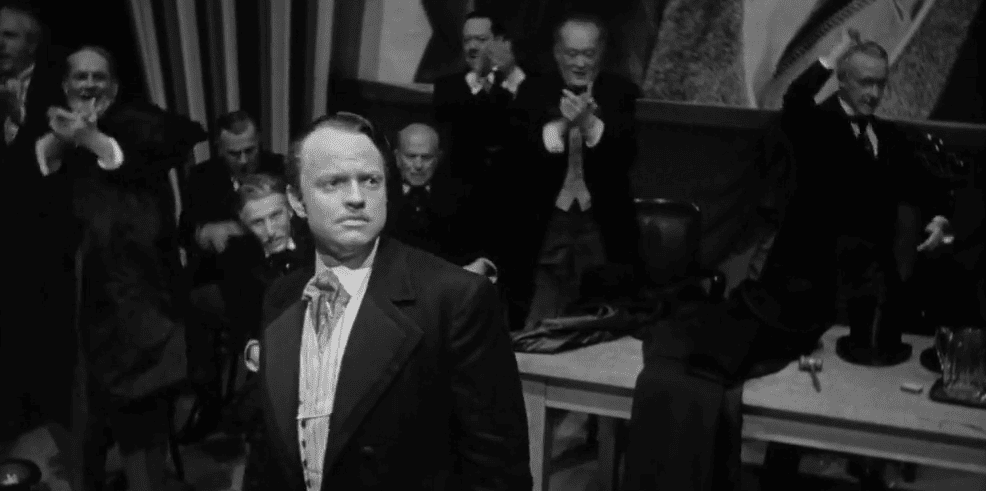
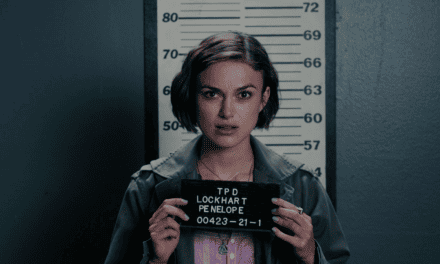


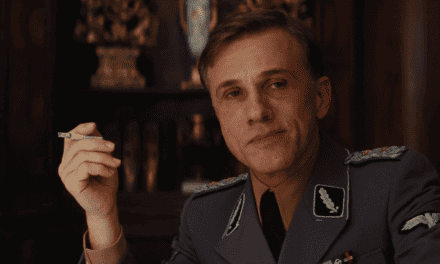
Recent Comments